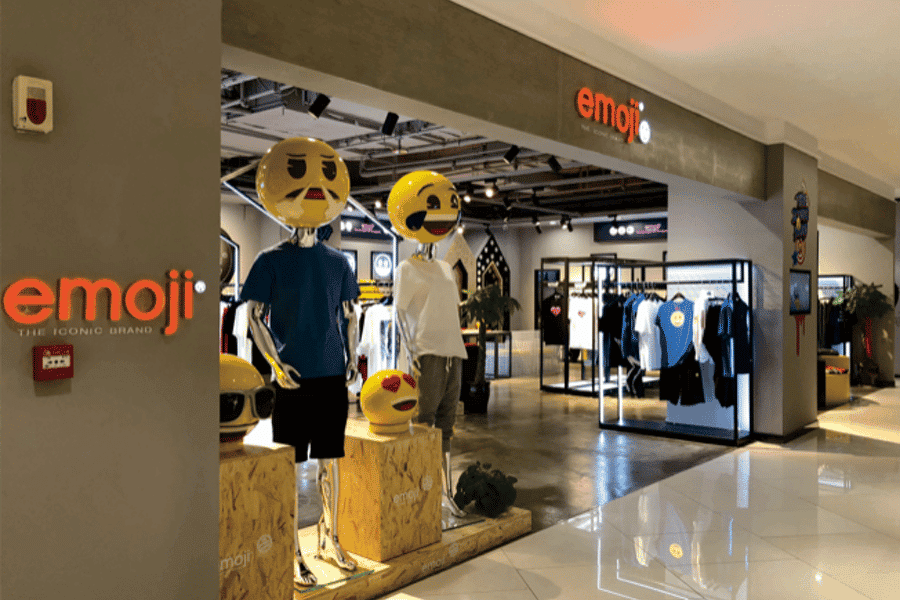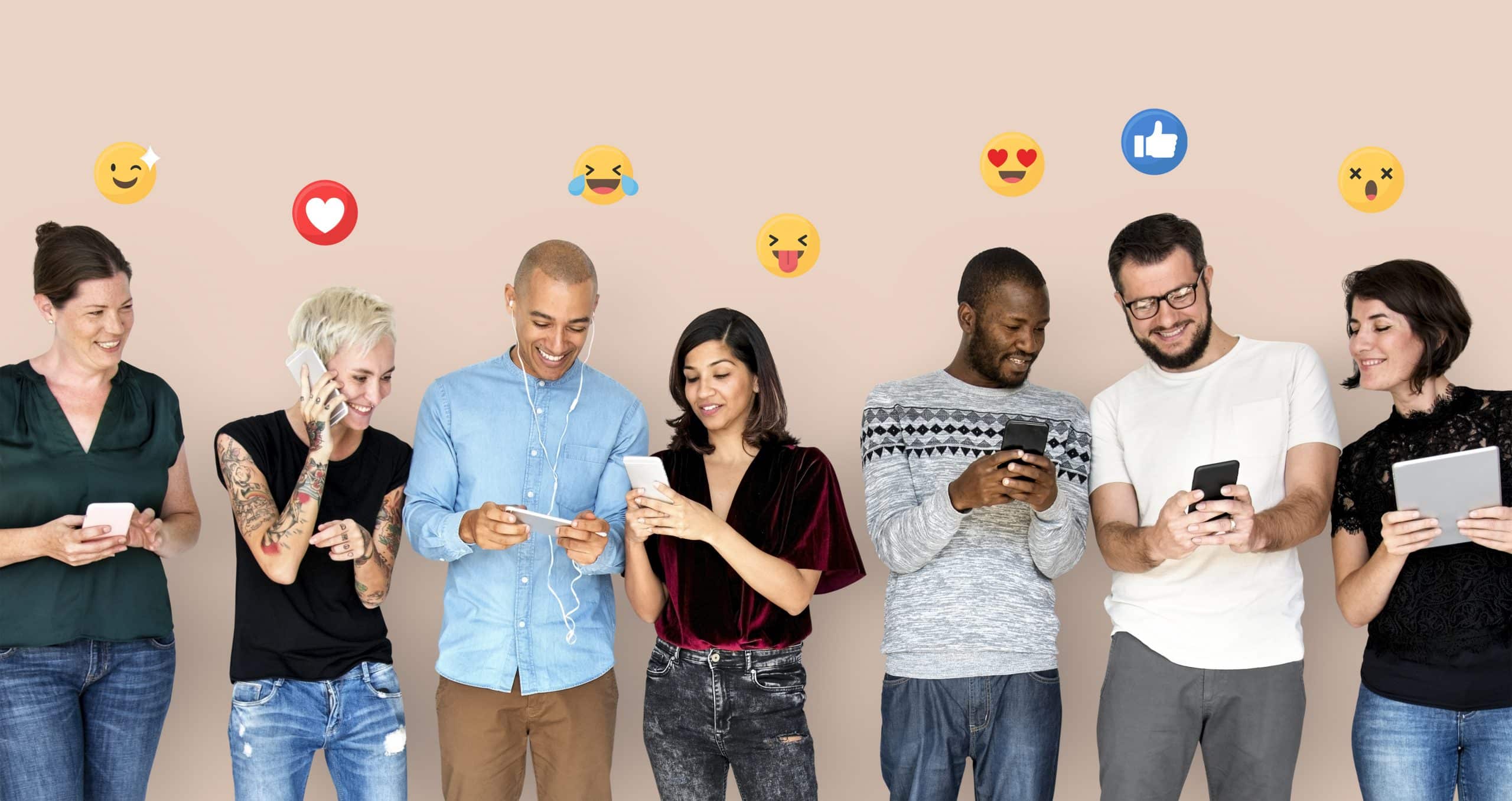Emojis have been an intrinsic part of our online communication. The little digital images can now be recognized almost anyone around the world. They can be seen everywhere- on chat groups, social media, emails, and even print communications also considered as universal language.
However, what many do not realize is that Emojis are now being used as a way to communicate across languages, cultures, and borders.
In other words, emojis have evolved into a new form of communication.
In recent years, emojis have become a staple in our daily interactions, regardless of age, gender, social status, and culture. While in the beginning, it was only young people that used emojis in their text messages, nowadays, emojis have become an inextricable part of everybody’s communication.

Over 5 billion emojis gets used every day on Facebook alone. And over 92% of online users use emojis.
But what makes these little images so popular?
In 2016 Oxford Dictionary named an emoji the “Word of the Year.” This alone shows the globalization of emoji culture.
Emojis have become a primary feature of the digital world and consider the universal language of the Internet.
Interestingly, humankind has been looking for ways to overcome language barriers and achieve effective interlingual communication forever. And while several attempts to create a universal language have failed (e.g., Esperanto), we now have new hope with the rise of emojis. But can emojis cross borders as effortlessly as we think? And how effective is this form of communication?
In this blog, we shall analyze studies dealing with emojis, how they affect our communication, how their meaning changes, and much more. But most importantly, we will try to find out if emojis have the potential to become a universal language.
The History of Emojis
Emojis are a form of pictorial language used to express an idea, an emotion, or an action.
The first emoji got created in 1999 by Shigetaka Kurita, a Japanese artist. He drew inspiration from the popular emoticons used in chatrooms at that time.

Emoticons (emotion + icon) differ from emojis. When put together in a certain way, these characters represent a facial expression. For instance, the following characters 🙂 use to express happiness while 🙁 would mean sadness.

Kurita’s idea was to create an interface whereby one could convey information more easily. For example, one could use the respective emoji instead of spelling “it’s snowing.”
Today one can see the whole collection of 176 emojis that Kurita invented at the New York’s Museum of Modern Art. It’s important to note that Kurita mainly used symbols rather than faces since his main aim was easy and effective communication. However, one emoji stood out – the heart emojis. This emoji became so prominent because it beautifully conveys both an understanding and an emotion.

Almost a decade after Kurita’s invention, in 2007, Google contacted the Unicode Consortium, a non-profit organization that aims to create a universal character encoding scheme.
Unicode characters are the main constituents of basically every software. Even the text you are reading right now comprises these characters. The Unicode Consortium’s purpose includes creating universal code that can use across all devices such as PC, Mac, Android, or iPhone. Since 1992 Unicode has got adopted as an international standard.
So, Google requests the Unicode Consortium to create universal language standards for emojis. And this way, Google manages to convert the Japanese emojis to Unicode private-users codes.

Two years later, in 2009, Yasuo Kida and Peter Edberg, both Apple engineers, submitted a proposal that suggested the adaptation of 625 new emojis into the Unicode Standard. The proposal got accepted in 2010. This event was among the first milestones which led to the establishment of emojis as a legitimate form of communication.
In 2011 and 2013, both iOS and Android devices, respectively, added an official emoji keyboard.
Today 10 billion emoji characters get used every single day. Currently, 3,019 emojis are present in the Unicode Standard, including 1,606 emojis of people and over 150 variations of the smiley face.
The usage of Emojis around the world
SwiftKey, a British software mobile keyboard company, published a study back in 2015 that focused on the usage of emojis among speakers of 16 different languages and regions.
The study took place between October 2014 and January 2015. It used a total of 800 emojis, organized into 60 categories. The study got conducted based on billions of pieces of data sent by millions of international users.
The “Emoji Report” revealed the following tendencies:
- The top 5 most frequently used emojis account for 77% of all emojis used by users.
- The most common face emojis include blowing a kiss, heart eyes, and a standard smiley face.
- The most common hand gestures emojis are thumbs up, clapping, okay, and the peace sign.

- The French-speaking users use heart emoji most frequently, four times more than any other region.
- France is the only region where the smiley face isn’t the most frequently used emoji.
- The French use the most positive emoji with a rate of 86%; Malaysians, on the other hand, display positivity much less, with only 60%.
- Arabic speakers use flowers and plants emoji four times more than the average rate.
- Americans use the rainbow emoji (among other LGBT-related emojis) 30% more than average.
- Australian English speakers use alcohol and junk food-related emojis two times more than the average rate. They also use drug-associated emojis 65% more than other users.

- Brazilian users sent emojis related to western religions, such as stars in the night sky, the prayer hands, and the church, more than twice the average rate. This category accounts for 1.1% of all emoji sent.
- Canadian English speakers are the most violent emoji users. They send the gun, fire explosion, knife, punching fist, skull, as well as bomb emojis at a 50% higher rate than average.
Also Read: What Do Brazilians Speak?
While the “Emoji Report” shows that indeed emojis have become a global phenomenon, it also showcases one crucial aspect – the usage of emojis varies across regions and languages.

Bearing this in mind, do we have the right to proclaim emojis as a universal language?
Emojis as the universal language of the Internet
According to a 2018 study, ‘Emoji and Communicative Action,’ emojis are falsely thought to have an inherent, universal language meaning.
The study claims that in order to find out about the meaning of an emoji character, we have to study the context of the interaction in which it is used.
Let’s take the heart emoji as an example. It is commonly associated with love. However, we can also claim that it signifies a friendship, fondness, or simply the physical heart. In this regard, we need to consider the context in which the heart emoji is used and by whom.
The study also focused on the face-covering hand emoji and analyze how it is used in different contexts. The data used was from a Chinese reading community chat in which participants discussed their weekly readings in Mandarin.
Also read: Doing Business in China: The Cultural Differences You Need to Know

The study found out this emoji has several associations attached to it, such as cheeky, bashful, concealing laughter, and embarrassment of a certain emotion or action. For instance, in some samples the emoji was used as an expression of laughter, indicating a rhetorical question or irony.
The paper concluded that emojis have become a universal component of written language, yet their meaning and usage are not universal.
Furthermore, the paper concluded that emojis cannot be classified as a language due to their lack of grammatical structure.
In other words, the meaning of an emoji depends on the context, while the latter depends on certain social cues among a specific group of people.
Overall, emojis are an essential part of our everyday interactions, yet they cannot be regarded as a universal language since their meaning depends on context, both textual and social. What’s more, emojis are a part of informal communication, and they are unlikely to become a part of more formal interactions any time soon.
The effect of Emojis on our communication
Many argue that emojis are a step backward. By integrating emojis into our daily interaction, our communication becomes poorer. We write shorter messages, replacing words with emojis. Instead of expressing our emotions and thoughts openly with words, we use a set of animated faces.
These are some arguments against the emojis characters.
But what if emojis improve our written communication?
What if emojis add to our communication nuances that written communication otherwise lacks?
Indeed, we often use emojis to communicate a particular emotion or a feeling. Emojis make our text messages much more nuanced – we convey a whole idea or emotion by a single icon – no need for lengthy and clumsy explanations! What’s more, emojis are strictly a part of written, informal communication. As such, they pose no danger for literary language, for instance.
Most importantly, emojis replace what written communication cannot give us – nonverbal cues. Due to the lack of any nonverbal cues in written communication, we can easily confuse a joke for a mean comment, for example.
When we communicate face-to-face, we typically use gestures, facial expressions, paralinguistics such as tone of voice or loudness, body language such as posture, eye gaze, haptics (touch), etc. All of these additional layers of meaning to our words.

What if emojis are the means of adding layers of meaning to the otherwise blunt written communication.
Comparing emojis to the language of Shakespeare or a language itself is completely wrong. Emojis are not a language, nor do they aim to replace a language. Emojis enable us to express our emotions and thoughts better, which significantly can improve the quality of digital communication.
It is a well-known fact that images are a much more powerful communication tool than words. For example, pictures are often used with children after an operation as a means of effective communication when the linguistic mode is diminished.
The popularity of emojis has extended outside the digital world.
For instance, a Swedish children’s charity has developed a set of emojis to help victims of domestic abuse express their emotions more easily. In this way, professionals can help the victims process their emotions more effectively.

Another example is an educational program called the Emotes project that uses a set of emoji-like icons and aims to teach children how to express their feelings better.
Emojis have impacted the educational and medical spheres, which is one of the biggest arguments against the criticism of these little animated icons.
Emojis undoubtedly belong to the virtual world. However, they are slowly finding their way into our everyday life, outside of technology. Indeed, emojis add emotional expression, personality, and levity to our written communication, enabling us to communicate more effectively.

Emojis are much more than a happy or sad face. . These little images have a value attached to them, which might vary across different social or cultural groups. And while emojis will never become a language of their own, we should take advantage of them and spice up our text messages, making them more expressive than ever before.
Does the meaning of Emojis change over time?
Between 2012 and 2018, a study on the evolution of the meaning of emojis conducted at the University of Edinburgh. The researchers reviewed 1.7 billion tweets, and what they found out was truly exciting:
The meaning of emojis changed over time, similar to languages.

The research was conducted with the help of models that identified how words are used, based on their environment (the surrounding words) to determine the meaning of emojis in different tweets. These models also aided the analysis of the tweets by detecting the changes of meaning that occurred.
According to the researchers, the data revealed that emojis undergo changes in meaning in similar patterns to natural languages.
For instance, the snake emoji, primarily used with words like “venom” and “animal” in 2012. After a few years, it got associated with words like “fake,” “hater,” and “bully.” In other words, the snake emoji generally refers to animals, but of late, it is mainly associated with human behavior.

Another pattern that emojis is referred to as seasonality, or the tendency of emojis to change their meaning depending on the season. For example, 🌲 can mean a tree from January to September, and for the rest of the year, associated with a Christmas tree. What surprised the researchers is that even though there is Christmas tree emoji 🎄, people still preferred the 🌲 emoji.
Overall, researchers concluded that change is inevitable. Emojis are an essential part of our daily interactions. Thus, they will continue to appear in new contexts and develop new meanings.
What’s more, researchers explain this change in meaning with the fact that young people are always trying to be original with the way they express themselves. This, in turn, is the reason why emojis appear in new contexts constantly and develop new meanings.
How do emojis look on android vs iPhone and does this change interpretation?
Generally speaking, emojis standardize by Unicode to prevent miscommunication across different platforms and devices.
Yet the Unicode standard is not so precise, leaving room for interpretation. This is why there are different variations of emojis across Android and iPhone devices, for instance.
Indeed, according to Unicode “while the shape of the character can vary significantly, designers should maintain the same ‘core’ shape.”Additionally, “Deviating too far from that core shape can cause interoperability problems.”
So, when brands decide to implement emojis on their devices or apps, they can design their own emojis in a way that reflects their brand image.
Have a look at the different emojis of different brands:

As you can see, while some emojis are fairly the same, others cannot be compared at all.
Now, let’s take a closer look at how different brands’ emojis compare.
So, how would you interpret the following “drooling face” emojis?

This is our attempt:
- Apple: So delicious…
- Google: So fascinating…
- Samsung: So disturbing…
Okay, let’s try another one. This is the “cookie emoji”:

While Apple and Google have managed to make it look more or less like a cookie, Samsung has gone for the crackers emoji instead.
Indeed, the “nerd face” emoji, the “loudly crying face,” “the old man,” “the dancing man,” etc., look completely different on iPhone, Android, and Samsung devices.




The more an emoji deviates from the norm, the harder it is to keep its meaning on point. In most cases, when an emoji looks so different that we can hardly recognize it, some of its meaning will likely get lost in translation, so to say.
In conclusion
Emojis have become an intrinsic feature of our written communication for a little over a decade after their invention. Now they are finding their way out of the digital world for more effective communication, especially with children.
These little icons have transformed our text messages into an expressive, original, and personal means of communication. Their intensive usage has resulted in the emergence of new meanings. However, the varying designs of emojis pose a danger to the efficiency of our daily interactions. These two factors have an adverse effect on cross-cultural communication as well.
The more the meaning and design of emojis are evolving, the less internationally recognizable they become. This, in turn, means that the meaning of emojis strongly depends on regional and social factors such as age, gender, nationality, etc.




